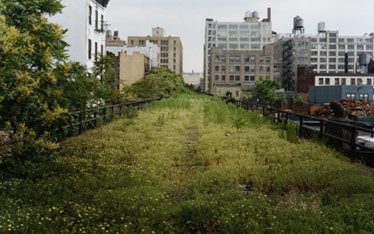The High Line – What We’ve Learned From One of New York’s Most Iconic Parks
A stretch of railroad tracks once responsible for delivering food to lower Manhattan sat desolate for nearly 20 years before being transformed into one of the most iconic parks in all of New York City. We know it as “The High Line,” an area that has become world-famous thanks to its transformation into a one-of-a-kind garden that sits on a nearly 2-mile stretch through lower Manhattan. It’s not hard to imagine that without the beautiful greenery, chic lighting, and modern walkway that make up the High Line today, it would have been an ugly piece of our otherwise beautiful downtown.
Seriously. The High Line’s own website describes public sentiment that the infrastructure that now comprises the High Line was once an “ugly eyesore” and references how Mayor Giuliani signed a demolition order for it as one of his last acts in office.
We’re glad the High Line has turned around, but that doesn’t mean this structure is always safe. In fact, in recent years, it has proved difficult to maintain and has caused many injuries to the millions who walk the path each year.
Making of the High Line

In 1999, fellow New Yorkers founded Friends of the High Line to advocate for its preservation and reuse as a public space.
Around 2005, with strong support from Mayor Bloomberg and the City Council, a special zoning area was proposed that facilitated the use of the High Line as a public park.
As such, the zoning was passed, and in 2006, landscape architecture firm James Corner Field Operations, design studio Diller Scofidio + Renfro, and famous planting designer Piet Oudolf were selected as the team to transform the High Line.
After first breaking ground on the project in April 2006, the first section of the High Line opened to the public from Gansevoort to 20th Street. Over the decades to come, the park would expand and iterate both naturally and resulting from its caretakers to become the world-famous park it is today.
The Highline Today
The High Line we know today is a 1.45-mile-long path featuring 500+ native and non-native plants and trees. It’s come a long way in the 17 years since its opening. Piet Oudolf’s planting design seen on the High Line is now one of the best-known naturalistic gardens anywhere in the world.
It’s quite a feat to have such a diverse set of plants, trees, and pollinator species that visit, raised on a path 30 feet high in one of the largest cities in the world — all surviving in just an 18-inch layer of soil.
Anyone who visits the naturalistic garden can sense the beauty of the setting that exists on the High Line. Plant species, free-flowing on each side of the walkway, spill ever so slightly onto the wooden walking path.
Maintaining the garden and walking paths is no easy feat. Timing and frequency vary by plant, placement in the sun, growth rates, competing plants, and several other challenges present the team of horticulturalists tasked with maintaining the garden.
Also at play is the wear and tear on the walking path caused by the more than 7,000,000 individuals who visit the High Line each year. As we’ve seen in increasing rates over the years, tripping hazards on the path, crowds, broken handrails, and unkept plants have injured many of those who visit.
Dangers at the High Line
Throughout the years, there have been increasingly severe reports of injury at the High Line. Unassuming pedestrians are falling due to the improperly designed walkways. For example, low-hanging cable fences near planter beds have caused countless injuries. One TripAdvisor review describes a High Line visit that ended in a broken elbow, nose, and forehead abrasion due to one of the many unmarked cable fences that dot the walking path.
Other hazards also lie in the wake, such as uneven and awkwardly placed pavers, unmarked stairs, and benches that are hard to see due to optical illusions.
Many such incidents have occurred since, and New York City courts are starting to show evidence of a real problem in the park.
Leav & Steinberg Helps Those Injured on the High Line
If you or a loved one has been injured while on the High Line in New York City, you should first make sure that you get medical help for your injuries, document the cause of the injury, and consult with an experienced New York City personal injury attorney.
The premises liability attorneys at Leav & Steinberg specialize in slip-and-fall accidents, especially those that occur in New York City’s public parks. Over the years, we have recovered millions for our clients who have suffered similar injuries within the five boroughs of New York City.
Our premises liability attorneys in NYC are experienced with the laws protecting those injured in New York’s public parks and can help you understand your right to recover. Contact us for a free consultation with one of our experienced attorneys, who can help you better understand your case and path to recovery.
Resources:
https://www.thehighline.org/history
https://dsrny.com
https://www.fieldoperations.net/home.html
https://www.nytimes.com/2024/06/26/realestate/high-line-nyc.html?smid=nytcore-ios-share&referringSource=articleShare&sgrp=c-cb









